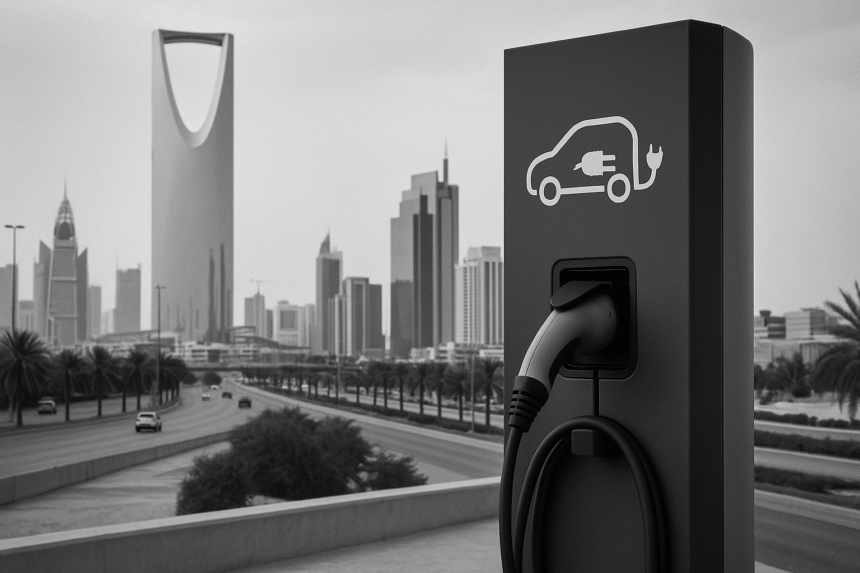Key EV Infrastructure Projects Reshaping the Middle East
The rise of electric vehicles (EVs) in the Middle East is no longer just a forecast—it’s a reality being actively shaped by government strategy, foreign investment, and public-private partnerships. As sustainability becomes central to national visions across the region, EV infrastructure projects in the Middle East are moving from pilot stages to large-scale implementation.
In this article, we examine the most important developments, country-by-country highlights, and how EV infrastructure is increasingly being linked with renewable energy deployment.
Why EV Infrastructure Matters for the Middle East
The Middle East’s historical role in the global energy economy is shifting. From fossil fuel exports to clean energy innovation, regional governments are now positioning EV infrastructure as a key pillar of long-term economic diversification and environmental targets.
With the UAE aiming for net-zero by 2050 and Saudi Arabia advancing Vision 2030, investments in EV charging stations, smart grids, and battery technology are accelerating across the region.
Regional Government-Led EV Initiatives
Government support has been instrumental in driving early adoption and infrastructure growth. Here are a few major public-sector initiatives:
United Arab Emirates (UAE)
-
DEWA’s Green Charger initiative supports over 380 public charging stations in Dubai.
-
Abu Dhabi’s E2GO joint venture (TAQA + ADNOC Distribution) plans 70,000 charging points by 2030.
Saudi Arabia
-
The kingdom is developing Neom, a smart city featuring a fully electric transport system.
-
Investments in Ceer Motors and partnerships with Lucid Motors have highlighted Saudi Arabia’s EV ambitions.
Qatar
-
The Public Works Authority (Ashghal) is integrating EV chargers across public transport stations.
-
Plans to electrify 25% of public buses by 2025 are underway.
Multinational Investment Trends
Global firms are increasingly targeting the region for EV-related investment. Some key patterns include:
-
European charger manufacturers (e.g., ABB, Siemens, Schneider Electric) are partnering with local firms to establish a regional footprint.
-
Chinese companies like BYD and Geely are exploring regional assembly and distribution hubs.
-
U.S.-based Tesla and Lucid are negotiating with Gulf regulators on infrastructure requirements to support market entry and expansion.
Joint ventures and local licensing partnerships are the preferred entry method due to localization requirements, regulatory alignment, and tender eligibility.
Country-by-Country Project Highlights
UAE: Integration with Real Estate and Hospitality
-
Developers are embedding EV chargers into malls, hotels, and parking complexes.
-
Companies like CATEC, Ducab, and Volt are becoming key infrastructure players alongside DEWA.
Saudi Arabia: EV City Planning and Industrial Strategy
-
NEOM and The Line are expected to serve as model environments for EV-only mobility.
-
The Saudi Electric Vehicle Charging Infrastructure Company (SEVCIC) was launched in 2023 to lead infrastructure expansion.
Egypt: Early-Stage Private Sector Growth
-
Although behind the Gulf, Egypt has seen increased interest in fleet electrification.
-
Public tenders now require EV charger-ready zones in new government buildings.
Bahrain, Oman, and Kuwait
-
These markets are taking a measured approach, focusing first on fleet electrification for taxis, logistics, and municipal buses.
-
Regulatory frameworks are being drafted to support private investment in charging networks.
How EV Infrastructure Aligns with Renewable Energy
One of the most strategic shifts in EV infrastructure projects in the Middle East is the integration of solar and clean energy sources.
-
UAE’s Masdar City and Saudi’s Red Sea Project include solar-powered chargers in their blueprints.
-
Egypt’s Benban Solar Park presents an opportunity to co-locate charging stations using direct solar feeds.
-
Utilities across the Gulf are experimenting with vehicle-to-grid (V2G) technology to stabilize solar-based grids.
This alignment reduces pressure on existing grids and improves the sustainability profile of transportation networks.
Challenges and Opportunities for Stakeholders
For executives considering market entry or expansion, several practical considerations apply:
Key Barriers
-
Complex and evolving regulatory environments
-
Varying standards for equipment and grid integration
-
High initial CAPEX with unclear ROI timelines
Strategic Opportunities
-
Partnering with approved local suppliers for tender eligibility
-
Targeting underserved emirates or provinces for high-impact projects
-
Integrating EV chargers into mixed-use developments or infrastructure upgrades
Conclusion: A Region in Motion
The Middle East is quickly emerging as a dynamic hub for clean transport, and EV infrastructure projects in the Middle East are at the center of this transformation. For forward-thinking infrastructure providers and investors, now is the time to act.
With national targets, foreign partnerships, and public demand all rising, those who understand the policy environment and act early will lead the region’s mobility future.



Leave a Reply